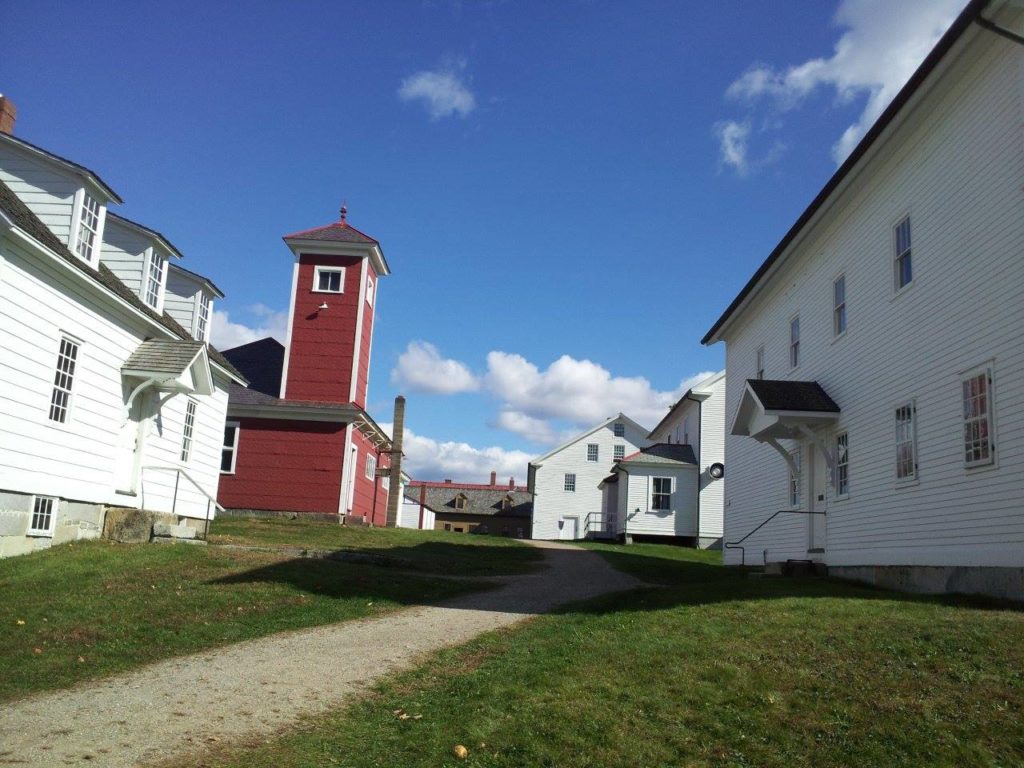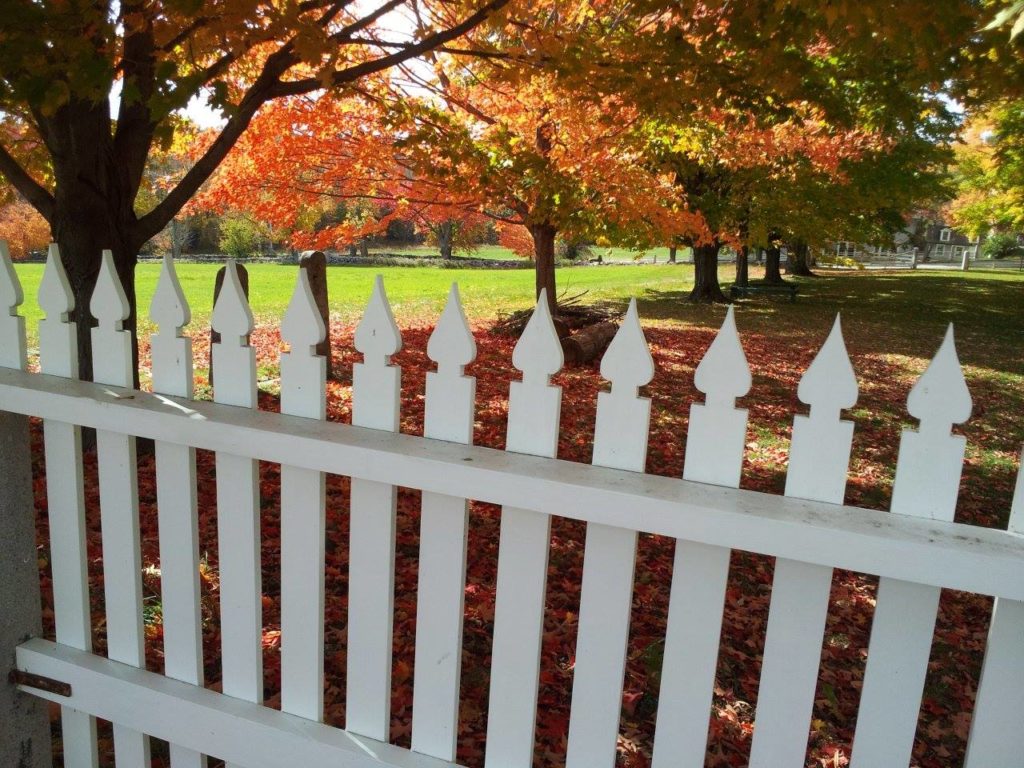The Shakers of October Posted by Gary Locke on Oct 14, 2021 in Culture, Travel & Geography
THE OCTOBER COUNTRY …that country where it is always turning late in the year. That country where the hills are fog and the rivers are mist; where noons go quickly, dusks and twilights linger, and midnights stay. That country composed in the main of cellars, sub-cellars, coal-bins, closets, attics, and pantries faced away from the sun. That country whose people are autumn people, thinking only autumn thoughts. Whose people passing at night on the empty walks sound like rain… Ray Bradbury
The photo accompanying this blog was taken at the historic Canterbury Shaker Village in Canterbury, New Hampshire. I’m very fond of this place. As you can probably tell, it is quite beautiful, especially at this time of year. But, when the shadows deepen and the mornings bring a cold fog to cover the ground, it can be a little spooky.
The village was founded in 1792 and was an active community of faith for 200 years. The origins of the Shakers dates back to 18th-century England when the United Society of Believers emigrated to the East Coast of the United States. They were known as the Shaking Quakers, or Shakers, because of their swirling, vigorous dances. The Shakers established nineteen self-contained communities from Maine to Kentucky.
Fundamentally, the Shakers committed themselves to lives devoted to the principle of “hands to work and hearts to God.” They believed in the equality of men and women in all aspects of society. All property was commonly held, with all taking equal responsibility and equal benefits. They were also pacifists and celibate. Men and women worked together for the benefit of their community but lived apart. As time passed, there were fewer and fewer new converts to the faith, and the Shakers gradually died off.
Canterbury Shaker Village is one of the oldest and most perfectly preserved Shaker Villages remaining. You can walk the grounds, visit the buildings, and hear guides describing the extraordinary lifestyles and individual stories of the Shakers.

The Shaker Village at Canterbury is a remarkable place to visit. You can’t help but be moved by the beauty of the place. Yes, there is a road that passes through the community. But the cars seem to be intruding on the peace that surrounds you. There are rolling hills of deep green grass studded with apple trees and sugar maples, which will produce in March the sap that will be boiled into maple syrup just as the Shakers did 200 years ago. White picket fences and old clapboard buildings, still standing as strong as the day they were built, dot the area. In the kitchens, you can still look out the paned glass windows and see the simple but lovely flower gardens. In the fall you’ll see a field of sunflowers planted long ago.
The Shakers were also Spiritualists, meaning that they believed that they could communicate with the dead. They were also never afraid of death, believing that the spirit simply passes on to another plain of existence very similar to the community that they built in our world. They believed that they had created a heaven on earth. Being devoted to their community, the Shakers at Canterbury voted to remove gravestones in their graveyard and instead erected just one granite stone marker simply labeled “Shakers”. Some Shakers are buried under stone slabs that serve as walking paths in the village.
The Shakers called the afterlife The Summerland. You don’t need to be in the village for very long, especially on a bright, warm October day, to understand why. But, when the shadows grow long at 5 o’clock, the spirits of the past seem to be walking with you.
I have a vague recollection of seeing the last remaining Shaker Sisters when they visited my local town when I was a boy. They seemed mysterious in their black gowns and veils, but I knew that they were greatly respected. And it’s no wonder.

Build vocabulary, practice pronunciation, and more with Transparent Language Online. Available anytime, anywhere, on any device.




